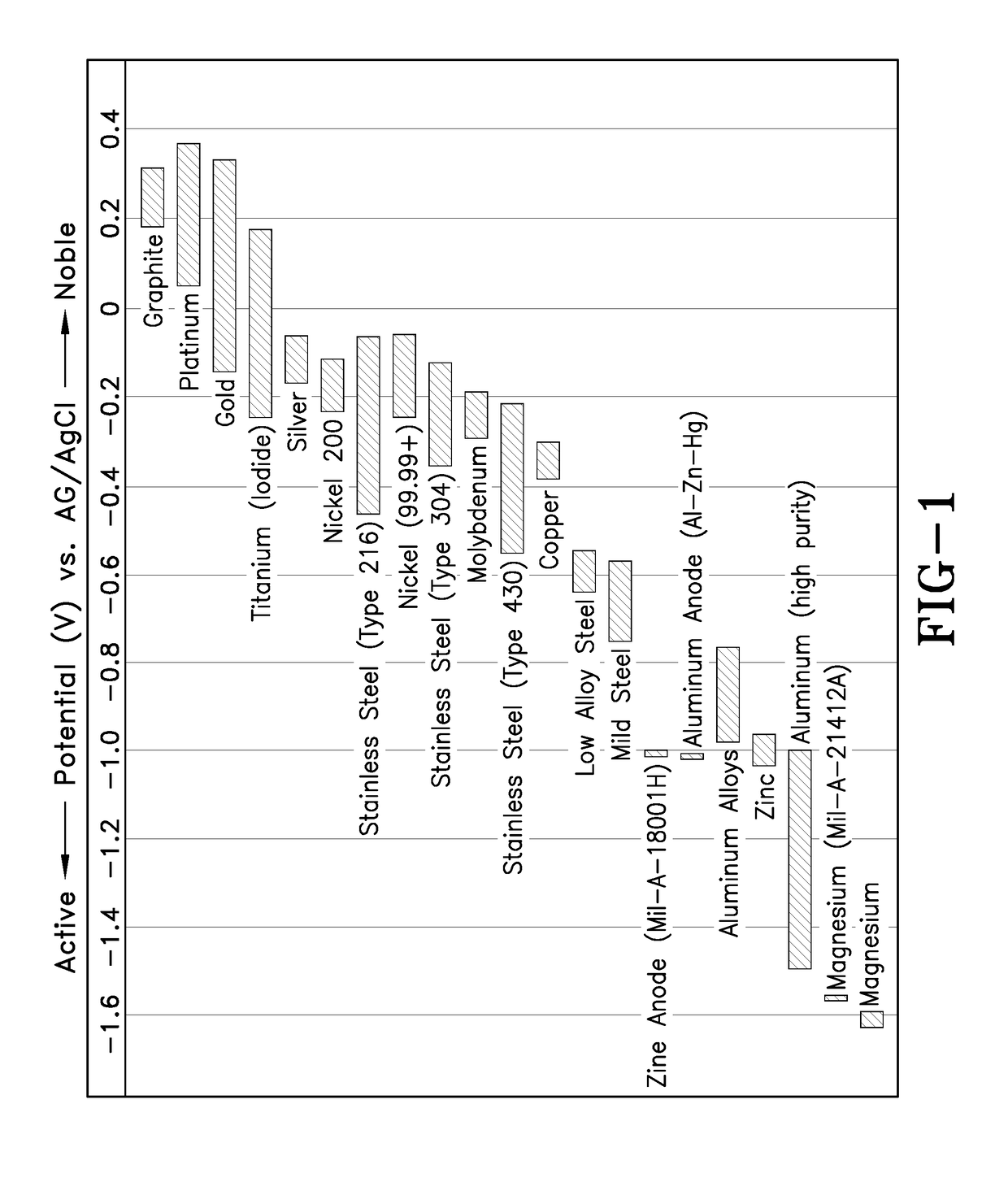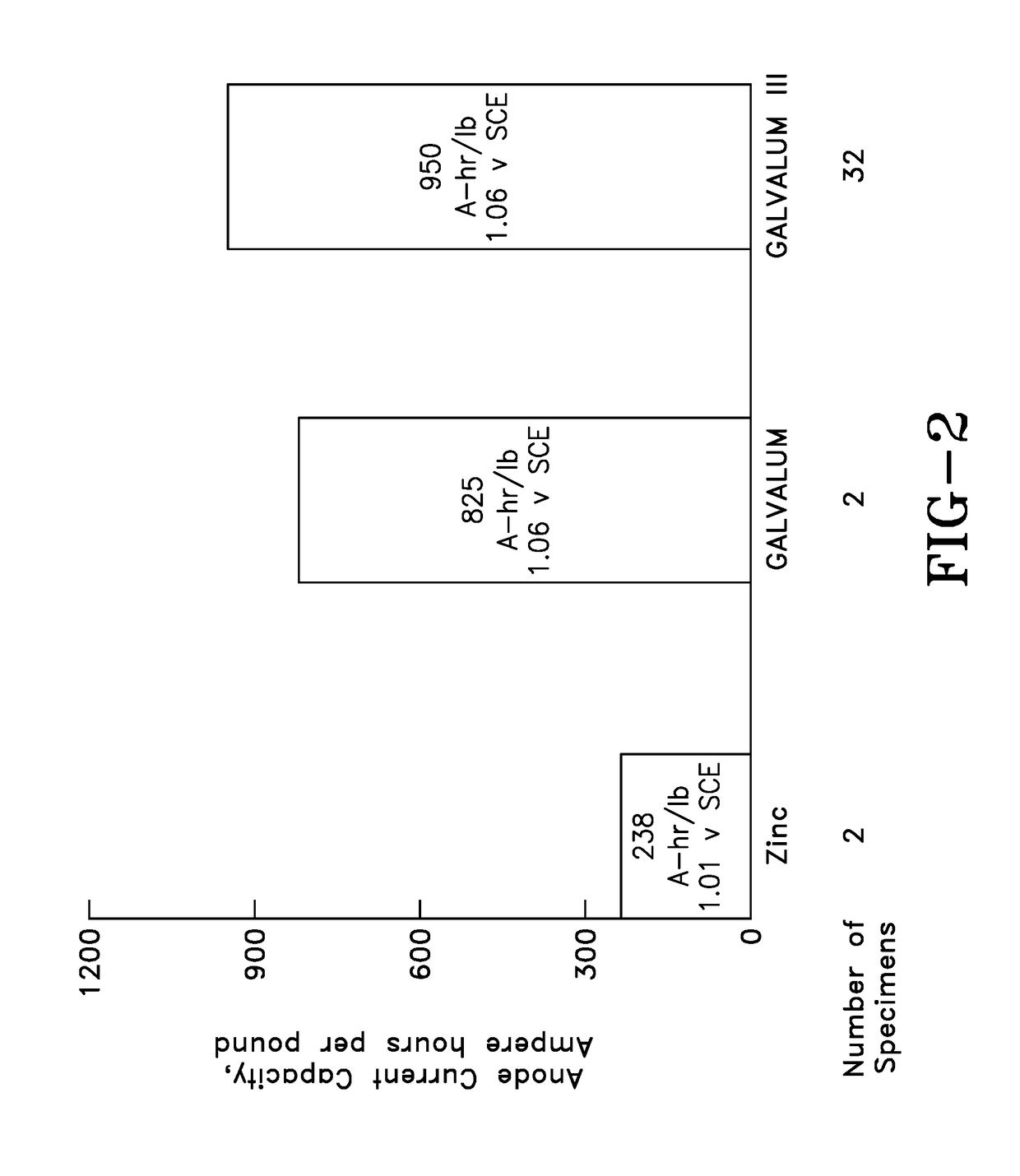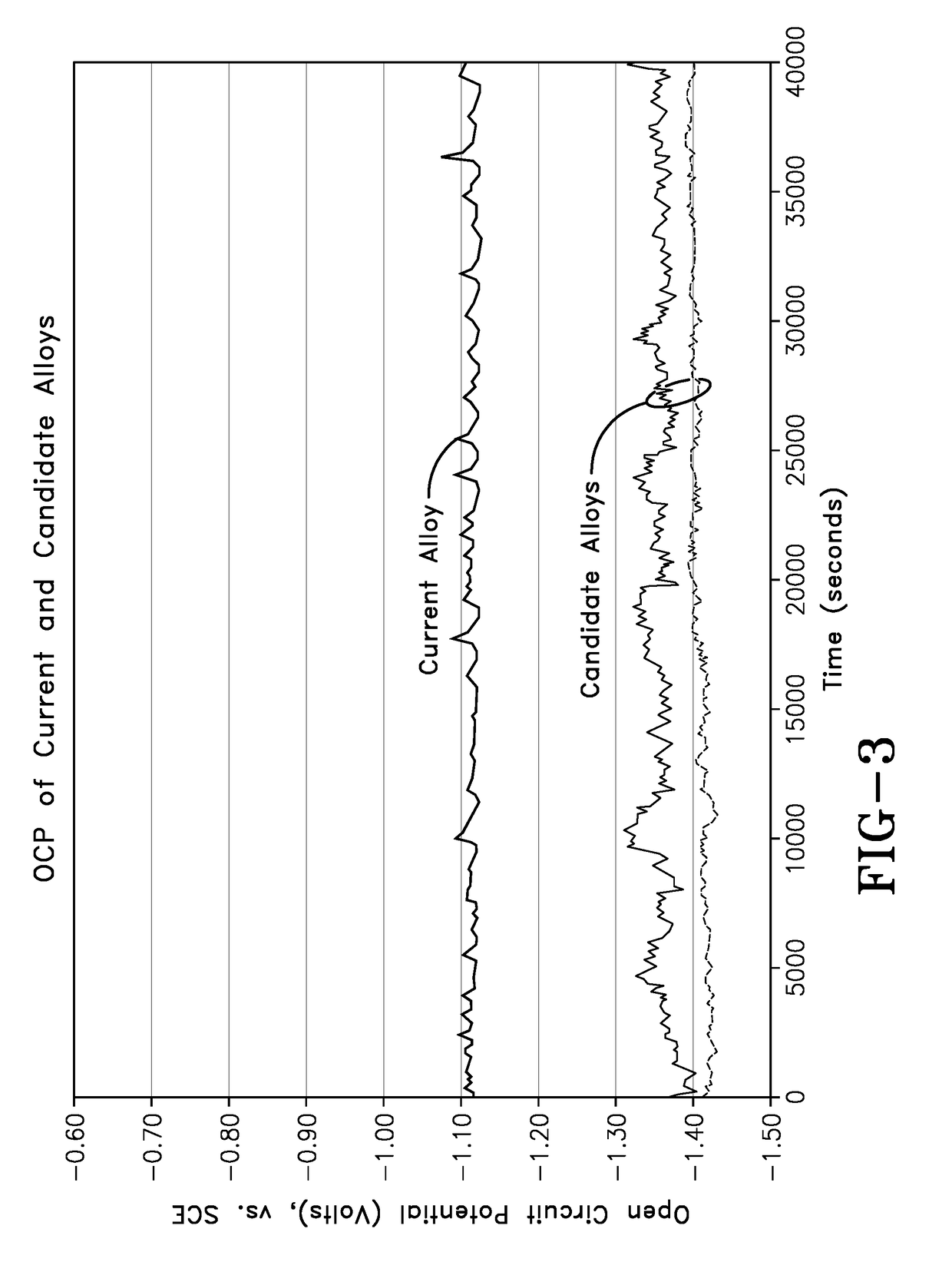Aluminum Anode Alloy
a technology of anode alloy and aluminum, applied in the field of aluminum alloy, can solve the problems of low efficiency of tin alloy, inability to meet the needs of practical applications, and high cost of zinc, so as to achieve the effect of adjusting the operating potential, efficiency, and activity of the alloy
- Summary
- Abstract
- Description
- Claims
- Application Information
AI Technical Summary
Benefits of technology
Problems solved by technology
Method used
Image
Examples
Embodiment Construction
[0015]The important aspect of this invention is an aluminum anode alloy with the following ranges of composition:
[0016]Tin: 0.01 to 0.20 weight %
[0017]Indium: 0.005 to 0.05 weight %
[0018]Aluminum: balance
[0019]Impurities: per MIL-A-24779
[0020]Alloys with a range of tin and indium compositions were procured from Sophisticated Alloys, Butler, Pa. and ACI Alloys, Inc., San Jose, Calif. Compositions were melted in vacuum arc furnaces and cast into ceramic crucibles with no other heat treatments. Ingots were then sectioned into 0.5 inch thick “pucks”, ground and polished for electrochemical assessment. Separately, 1.0 inch cubes were also machined for efficiency testing. The anodes of the invention consist essentially of 99.9 percent by weight of aluminum and preferably high-purity aluminum of 99.99 percent by weight with tin ranging from about 0.01 to 0.20 percent and indium ranging from about 0.005 to 0.05 percent by weight.
[0021]The following weight percent alloys were assessed for op...
PUM
| Property | Measurement | Unit |
|---|---|---|
| tensile strength | aaaaa | aaaaa |
| thick | aaaaa | aaaaa |
| weight density | aaaaa | aaaaa |
Abstract
Description
Claims
Application Information
 Login to View More
Login to View More - R&D
- Intellectual Property
- Life Sciences
- Materials
- Tech Scout
- Unparalleled Data Quality
- Higher Quality Content
- 60% Fewer Hallucinations
Browse by: Latest US Patents, China's latest patents, Technical Efficacy Thesaurus, Application Domain, Technology Topic, Popular Technical Reports.
© 2025 PatSnap. All rights reserved.Legal|Privacy policy|Modern Slavery Act Transparency Statement|Sitemap|About US| Contact US: help@patsnap.com



